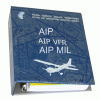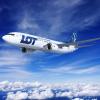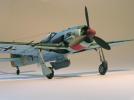Flightline SW4 at Cork on Feb 10th 2011, failed landing in low visibility
The Irish AAIU have released their final report concluding the probable cause of the accident was:
Loss of control during an attempted go-around below Decision Height in Instrument Meteorological Conditions.
Contributory Cause(s)
(Note that Contributory Causes are not listed in order of priority)
- Continuation of approach beyond the outer marker equivalent position without the required minima.
- Continuation of descent below Decision Height without adequate visual reference.
- Uncoordinated operation of the power levers and the flight controls.
- In-flight operation of the power levers below Flight Idle.
- A torque split between the engines that became significant when the power levers were operated below Flight Idle.
- Tiredness and fatigue on the part of the Flight Crew members.
- Inadequate command training and checking during the command upgrade of the Commander.
- Inappropriate pairing of Flight Crew members.
- Inadequate oversight of the remote Operation by the Operator and the State of the Operator.
The AAIU reported that the captain (31, CPL, 1800 hours total, 1600 hours on type, 25 hours in command on type) was pilot monitoring, the first officer (27, CPL, 539 hours total, 289 hours on type) was pilot flying. Both pilots were certified for CAT I, however, were not certified for CAT II.
The captain had undergone upgrade on Feb 2nd 2011, subsequently flew 7 sectors under supervision and completed two line checks. His first flight in command of the aircraft took place on Feb 6th 2011, 4 days prior to the accident. The captain had flown into Cork 61 times, his logbooks never showed a diversion.
The first officer had joined another Spanish operator flying SA227s for 270 hours, then joined Air Lada. According to the logbooks he subsequently flew with line captains, who were not instructors. He accumulated 19 hours with Air Lada but never completed a line check although required.
The aircraft was owned by a Spanish bank, leased out to Lineas Aereas de Andalucia (trading as Air Lada), who also employed both pilots. The aircraft was subleased to Flightline S.L. and was on the AOC of Flightline. Tickets for the flight were sold by Manx2. Maintenance was provided to the aircraft by another Spanish maintenance provider. The aircraft carried equipment permitting CAT I operation, the aircraft was not certified for CAT II operations.
At the time of the accident dense fog characterized the weather conditions, instrument meteorologic conditions thus prevailed at Cork.
The aircraft was on an ILS approach to Cork's runway 17 with IRVRs reported below the required minima for the aircraft and crew, the crew however elected to continued the approach past the outer marker and further below decision height before aborting the approach, the lowest height recorded by TAWS was 101 feet AGL.
The aircraft climbed out and positioned for another approach, this time an ILS approach to runway 35 with the sun in the back and the reasoning that visual acquisition of the runway should be easier. The conditions were still below required minima when the crew elected to continue the approach past the outer marker and further continued below the decision height before again aborting the approach, the lowest height was 91 feet according to TAWS.
The aircraft climbed out and entered a hold for about 15 to 20 minutes to assess the options and wait for weather improvement. Weather reported were acquired from Waterford, Dublin, Shannon (all of which reported below the aircraft and crew minima) and Kerry, the latter reporting visibility above 10km.
At the time when the weather report from Kerry arrived the weather conditions slightly improved at Cork but still remained below minima. The crew decided to attempt another approach to runway 17, briefed the approach, the commander decided to operate the power levers himself. The aircraft positioned for the approach and was aligned with the localizer about 11nm out, when the weather conditions reached an IRVR of 550 meters, the required minima, which was reported to the crew. When the aircraft was handed off to tower about 9nm before touchdown, the RVR was reported at 500 meters again below required minima.
The approach was continued, as briefed the commander took control of the power levers during the latter stage of the approach. On short final at normal attitude and speed, about 9 seconds prior to impact, the power was reduced and a left roll developed reaching 40 degrees of left bank, 7 seconds before impact the stall warning activated, 4 seconds before impact the captain called for a go-around acknowledged by the first officer. While the engines accelerated the aircraft rolled rapidly to the right, the right wingtip contacted the runway surface, the aircraft continued to roll inverted and impacted the runway inverted at about 115 degrees right bank.
According to the cockpit voice recorder the stall warning sounded during the last 7 seconds of flight.
The AAIU reported that they had considerable problems establishing the rostering of the various crew members assigned to the UK-Ireland operation. The aircraft technical log and flight documentation submitted to the AAIU did not correspond to the electronic recordings, that were subsequently submitted to the investigation.
The investigation determined that the accident first officer was originally rostered "free" between Feb 8th and Feb 12th 2011. Another first officer required a change of duty on Feb 9th 2011 to undergo an English Proficiency Training in Barcelona, hence the accident first officer was called to duty and assigned to flights on Feb 9th and Feb 10th. The AAIU stated: "On 8 and 9 February 2011, the days prior to the accident, the Investigation found inconsistencies in the documentation supplied by the Operator regarding the identity of the operating crew members including that of the Co-pilot."
The AAIU reported that the partner of the first officer told the AAIU that "he did not have very much rest. He was working on a defined route incorporating some night time flights carrying post".
The AAIU reported that the aircraft had been configured to an 18 seat layout, the operator however was unable to provide an approval for the configuration, e.g. an approved drawing of the configuration.
The AAIU reported that according to the flight data recorder, the first available recording of which was 106 hours before the accident, from the first recording to the last the engines showed a mismatch of torque, the right hand engine delivering up to 5% more torque than the left, when the power levers were advanced for takeoff the right hand engine accelerated noticeably faster than the left. The flight data recorder further revealed that in cruise the power levers were adjusted misaligned in order to achieve symmetric thrust.
According to the FDR the left hand engine delivered 21-23% torque from 20 to 9 seconds before impact, the right hand engine delivered 25-27% torque. With the adjustment of power levers 9 seconds prior to impact the left hand engine delivered negative torque of -9%, the right hand engine a torque of +8%. Both engines accelerated to beyond 90% torque after the power levers were advanced for the go-around.
The AAIU stated that according to the registry of the aircraft Authorities of Spain, AESA, were responsible to provide continuing oversight of the operator and operation. AESA informed the AAIU however, that they were not aware of the links between Air Lada and Flightline nor were they aware of the Manx2's involvement.
AESA also stated that they were not aware that two pilots had joined Air Lada whose licenses had been limited to non-commercial air transport flights until English proficiency training had been completed. There was no obligation with operators to inform AESA about remote operations, had AESA known about the remote operation they might have taken greater interest.
The AAIU analyzed that all three approaches were flown past the outer marker despite reported weather conditions did not permit the approach. The approach was further continued beyond decision height before go-arounds were initiated.
The AAIU further analyzed, following the third approach the aircraft was at 140 KIAS suitable for the configuration and phase of flight, the zero bank stall speed was 88 KIAS. The flight controls were no factor into the accident, the primary instruments were no factor into the accident, the ground based ILS transmitters functioned normally, the approach lighting functioned correctly, the ILS thus was not a factor into the accident. The aircraft based ILS receivers and instruments were no factor into the accident, too, the crew was not incapacitated.
Both powerplants were working however were not operating symmetrically. The investigation was satisfied that this asymmetry did not materially affect the normal operation of the aircraft, however, when the aircraft entered a regime outside the flight manual the asymmetry became "significant".
The AAIU analyzed that the power levers were retarded with the intention to put the engines into flight idle at 40 degrees of power levers 9 seconds prior to impact, the power levers however reached 31-33 degrees below flight idle according to computations based on torque and revolutions per minute achieved by the engines. Shortly before impact the power levers were increased to about 72-75 degrees for the go-around. Examinations showed the propellers were not in beta at that phase of flight.
The AAIU analysed that the captain had 9:15 hours rest on Feb 8th and 11:15 hours of rest on Feb 9th, both values listed in red indicating the required minimum rest times were not achieved in violation of Flight Duty Time Limitations and Rest Regulations, the commander should have had an additional 4:30 hours of rest between Feb 8th and Feb 9th and an additional 70 minutes from Feb 9th to Feb 10th.
The AAIU analysed that the first officer returned to duty on Feb 10th 70 minutes prior to commencement of minimum rest time required after his flights on Feb 9th. In addition the first officer had exceeded flight time limitations on Feb 7th and 8th flying for 12:30 hours with a maximum duty time of 10 hours.
The AAIU stated: "In the four days prior to the accident and on the day of the accident, the Investigation identified a total of five breaches of the Flight & Duty Time Limitations and Rest Requirements (FTL) regarding the duties operated by the flight crew. The duties operated resulted in both Flight Crew members having inadequate rest prior to commencing duty on the day of the accident." The AAIU also reported that checking the records of all 7 pilots involved in the UK/Ireland operation identified other breaches of the FTL, one being a gross exceedance with a flight duty time of 20 hours and 10 minutes.
The AAIU analyzed that given the workload at the accident flight in manual flight and challenging weather conditions and the inadequate rest of both flight crew prior to the accident flight tiredness and fatigue may have played a role in the accident.
The AAIU analyzed that weather reporting and forecast was not a factor into the accident. However, the crew was inadequately prepared regarding meteorological conditions at Cork prior to their departure from Belfast.
The AAIU analyzed that the commander's decisions were not in line with good practice and contributed to a situation that resulted in the loss of the aircraft. The nature, content and duration of his command training was inadequate, the commander therefore was ill prepared for the situation he found himself in on the day of the accident and did not possess the necessary tools to exercise good judgement or to make correct operational decisions in challenging circumstances.
The AAIU analysed that the maintenance provider used a checklist for engine ground runs that was not appropriate, a more comprehensive checklist should have been used which included an additional power lever split test at flight idle.
The AAIU stated after listing maintenance non-compliances: "These non-compliances would represent a hazard to flight safety and therefore be classified as Level 1. As a consequence, the operation of the aircraft should not have taken place with this level of non-compliance with Regulations."
The AAIU continued analysis: "Systemic deficiencies at the operational, organisational and regulatory levels were identified by the Investigation as being contributory to the accident. Such deficiencies provided the conditions for poor operational decisions to be made on the day of the accident which resulted in the loss of the aircraft with fatalities and serious injuries."
11 safety recommendations were released as result of the investigation, 8 of which were addressed to European Authorities including the European Commission, EASA and AESA dealing with regulatory oversight, one at ICAO and 2 at Flightline.
http://avherald.com/h?article=4379bc53/0002














Komentarze